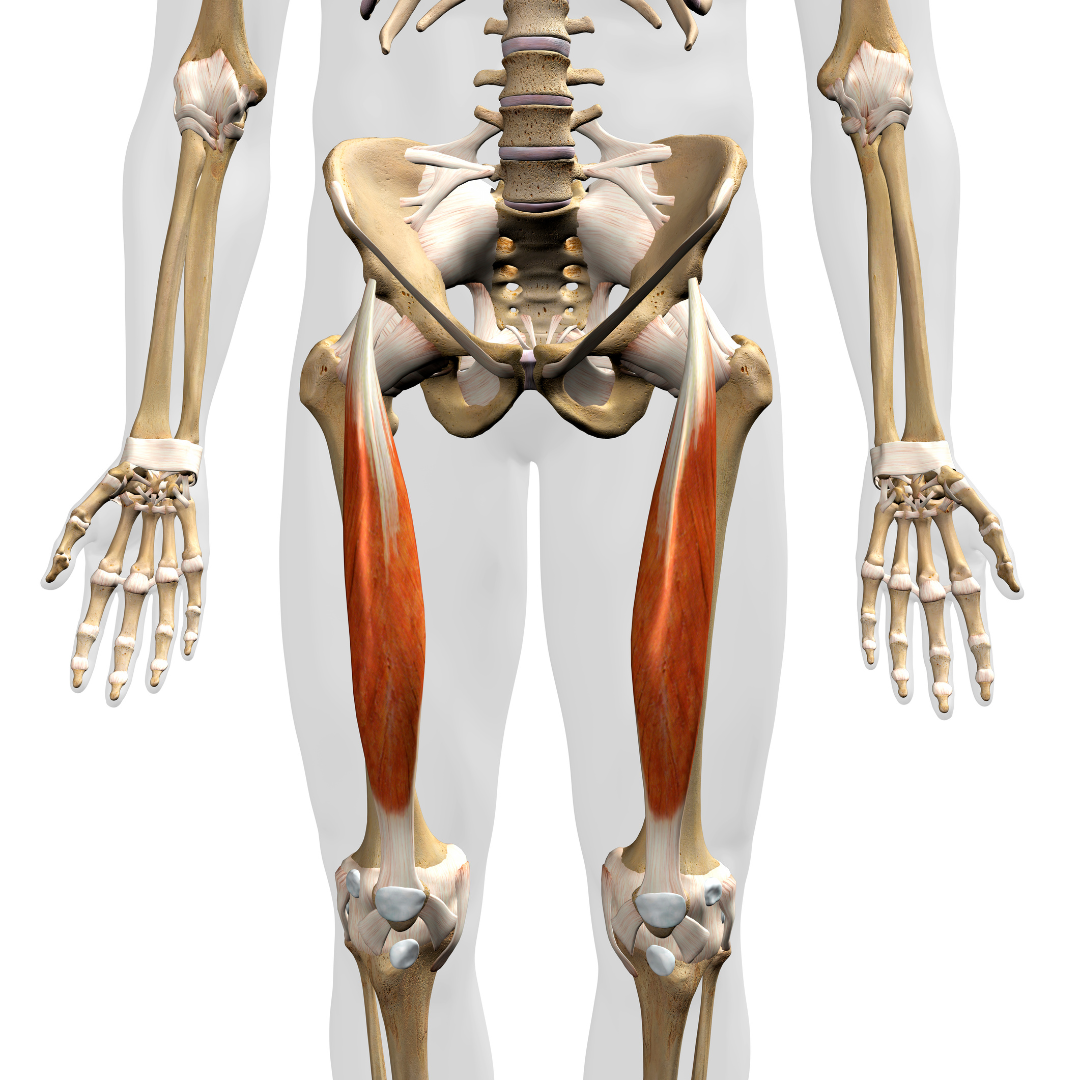1. Increased Rectus Femoris Activation
Squatting with elevated feet on an incline board significantly enhances the activation of the rectus femoris, a key muscle in the quadriceps group. The rectus femoris is crucial for knee extension and hip flexion, both essential for proper squat mechanics. The incline board promotes greater anterior knee translation, which in turn, requires more engagement from the rectus femoris to stabilize the knee joint and maintain proper form. This increased activation makes the exercise particularly beneficial for strengthening the quadriceps, which can help in improving overall lower body strength and preventing injuries related to weak quads.

2. More Upright Chest and Deeper Squat

The incline created by the elevated feet naturally shifts the centre of gravity forward, encouraging a more upright torso during the squat. This posture adjustment reduces the strain on the lower back and allows for a deeper squat, increasing the range of motion.
A deeper squat enhances muscle activation in the lower body, particularly in the quadriceps, hamstrings, and glutes, leading to more effective strength gains. The more upright chest position also helps in maintaining a neutral spine, reducing the risk of injury and promoting better squat mechanics.
3. Enhanced Lower Limb Muscle Activation with Increased Decline Angles
Research has shown that increasing the decline angle during squats on an incline board leads to greater activation of the rectus femoris and gastrocnemius muscles. These muscles play a crucial role in knee stabilization and calf strength, respectively. As the decline angle increases, these muscles are recruited more to control the descent and ascent during the squat, offering a more comprehensive lower body workout. This enhanced muscle activation can be particularly beneficial for athletes and individuals undergoing rehabilitation to improve muscle strength and joint stability.
-
4. Effective Knee Joint Rehabilitation
The use of a Slant / incline board with a specific decline angle, particularly around 25º, has been suggested as an effective method for treating knee joint issues. The eccentric squat exercise performed at this angle promotes controlled anterior knee translation, which can aid in the rehabilitation of knee injuries by strengthening the surrounding musculature and improving joint stability. This method is especially useful for individuals recovering from patellar tendinopathy or other knee-related injuries, as it allows for targeted strengthening of the quadriceps without overloading the joint.
-------------------------------------------------------------------------------------------------------------
References
- - Lomba, N., Vilas-Boas, J. P., & Roriz, P. (2021). Decline angle effects on the lower limb biomechanics of the squat rehabilitation exercise: A systematic review. *Advances and Current Trends in Biomechanics*, 216-220.
- - Barnett, T. (2023). Knees over Toes: Promoting Functional Range of Motion. *Physiotherapy & Sports Injury*, 1(2), 1-2.

Share:
The Reverse Squat Strap: A Key Tool in Knees Over Toes and ATG Methods- Aiding Athletic Performance
The Benefits of Flossing Using Floss Bands: Enhancing Range of Motion and Stretch Tolerance